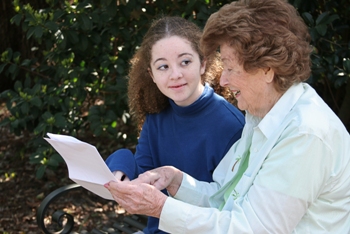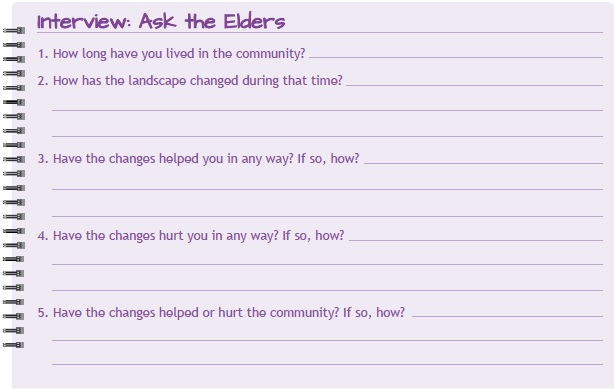 If your community is like most others, it is much different than it was 100, 50, 25, or even five years ago. By viewing pictures and interviewing elders, children can begin to understand how people affect the environment in which they live.
If your community is like most others, it is much different than it was 100, 50, 25, or even five years ago. By viewing pictures and interviewing elders, children can begin to understand how people affect the environment in which they live.
Background
It has been said that change is really the only constant in the universe. Some changes happen quickly, such as a tree falling in a storm. Others happen very slowly, like the washing of mountains into the sea. History is a record of changes, be it the history of a tree, forest, society, or nation.
To begin investigating changes in your community, ask children if they have noticed any new developments—are there new stores, houses, parks, or schools nearby? If so, how do these changes make them feel? Discuss the pros and cons of how new developments affect people and communities. Talk about how such changes might affect animals and plants in the area.
Have children learn more about the history of their community by interviewing an older person who has lived there many years. This person could be a parent, grandparent, or neighbor. Children can begin with the questions below, and then ask their own:

Community Timeline
Have children create a book or timeline that documents change over time in your town or community. It could include pictures, maps, copies of public records, and other documentation. Use photographs and poster paper to incorporate technology with a website (try ReadWriteThink’s free timeline creator or an app such as “Timeline 3D” available for purchase on iTunes).
Download this Activity
Descarga la actividad en español: Ayer y hoy
Get the Full Activity
This family activity is adapted from Project Learning Tree’s PreK-8 Environmental Education Activity Guide which can be obtained through an in-person professional development workshop or online course.
All PLT activities are copyright protected. Please remember to reproduce responsibly.
Click here for our Content Reprint and Adaptation Policy.
years ago. By viewing pictures and interviewing elders, children can begin to understand how
people affect the environment in which they live.
Background
It has been said that change is really the only constant in the universe. Some changes happen
quickly, such as a tree falling in a storm. Others happen very slowly, like the washing of mountains
into the sea. History is a record of changes, be it the history of a tree, forest, society, or nation.
To begin investigating changes in your community, ask children if they have noticed any new
developments—are there new stores, houses, parks, or schools nearby? If so, how do these
changes make them feel? Discuss the pros and cons of how new developments affect people and
communities. Talk about how such changes might affect animals and plants in the area.
Have children learn more about the history of their community by interviewing an older person
who has lived there many years. This person could be a parent, grandparent, or neighbor.
Children can begin with the questions below, and then ask their own:



